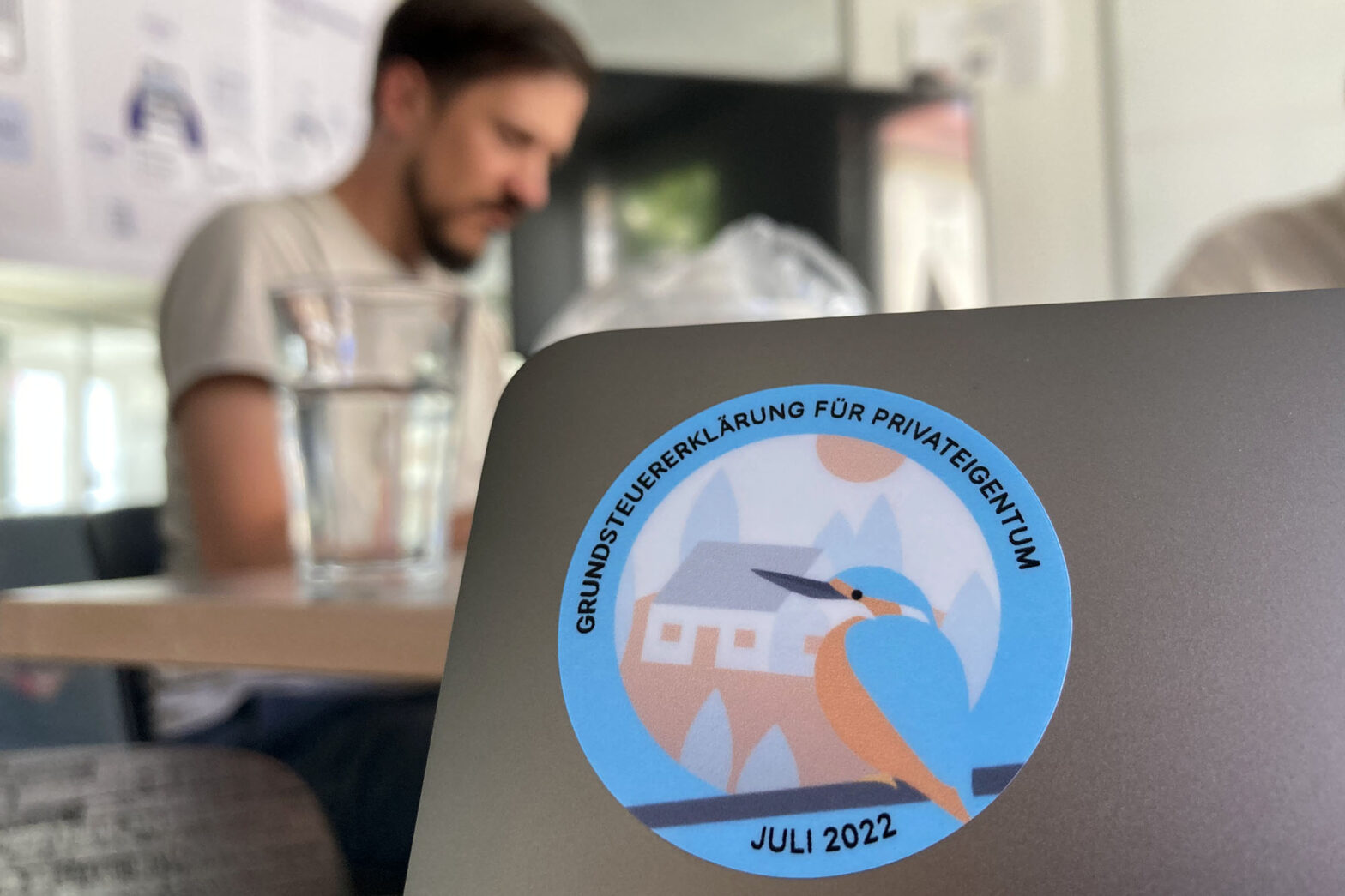This week and next, I’m working only 3 days to spend time with friends and family across Europe. I’m also testing how well wifi works on European trains and the offline function of the Google Suite.
Witnessing a service launch
Without making a contribution of any kind, I was able to witness the launch of the new service for submitting a property tax declaration. Designers Christine and Tine did an excellent job with it. And they and the entire team will continue to iterate and grow the scope of the service in the coming days, weeks, and months. Charlotte hinted at it in our talk at the CityLAB’s summer festival.
The creation of the service is linked to a Federal Constitutional Court decision from a few years ago. The team had half a year to develop it, and the service will exist for several months until autumn.
One challenge is creating awareness for the service. There are over 35 million properties in Germany, but quite likely fewer property owners. Lacking a central website for all government services, even Federal-level ones, it isn’t easy to point people to the service once it exists. Like in other countries, including the UK, government relies on media reports that tell people about the online service. Luckily, hundreds of outlets, paper and online, have picked it up and referenced the service.
Another challenge is offering a service to people in all parts of the country. This service can be used by people in 11 of the 16 Federal states, including the most populated one. Alternative services exist in the other 5 states, giving users a different experience. A few years ago, Lizzie and Sūryanāga wrote about service patterns for standardising, not centralising services (also available in German). There were many good thoughts in it, and I wish more work had happened since then that others could build upon. Fragmentation of services due to the Federal structure of German is something people have highlighted for years. More dialogue and collaboration across Federal states is probably the best way to mitigate it.
On Monday, our service team was busy launching the property tax service and continued to make changes throughout the day. Then, right before some celebratory drinks in the late afternoon, stickers to mark the milestone arrived.
It is the first sticker we created at the Digital Service. They follow the tradition established by digital service teams internationally, inspired by NASA’s iconic mission patches for space missions. Our graphic designer Daphne designed it based on the animal the team picked (without knowing what it was for). It’s a common kingfisher – or ‘Alcedo atthis’ in Latin. The team was grateful for the tangible reward and instantly put it on their laptops. So probably some more stickers are going to follow for other teams and projects.
Differentiating design roles
So far, we have – with one exception of a graphic designer – only hired designers who cover user interface design and look at the wider user experience: UI/UX designers. Together with product managers, our designers have been conducting user research as part of their roles. They applied (and continue) to apply a range of user research approaches and methods for projects in discovery, alpha, beta and live stages. We have also worked with user research contractors where we either did not have the capacity or required a specific capability.
Now, we are about to open our first dedicated senior user research role. It might be the first in German government. With that, we recognise that user research is a full-time role, especially in larger and more complex projects. We also need to build further expertise.
So this week, I drafted the job description, taking a clue or two from those at GDS. And to promote it, I started drafting a blog post giving an overview of the types of our user research activities so far. I hope we’ll be able to attract people with broad experience who can help us extend the practice.
What’s next
Next week, I’ll contribute to a naming workshop and continue to work on the user research role description.

